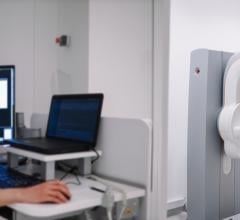
January 20, 2017 — To help healthcare chief information officers (CIOs) examine the important role enterprise imaging plays in value-based care, Logicalis Healthcare Solutions is offering a new downloadable white paper, “Accessible Images, Stronger Outcomes.” The company is also offering seven tips for selecting the right enterprise imaging platform.
One of the most important discussions in healthcare today, according to Logicalis, centers around the shift from fee-for-service care to value-based care. This directive in large part will be determined by healthcare providers’ ability to marry important patient images, documents and other clinical multimedia files to the patient’s electronic health record (EHR). Too often today, EHRs do not present the whole patient story. This means physicians must re-order tests unnecessarily or make care decisions without a comprehensive patient record to contribute to their decision-making accuracy.
According to Logicalis Healthcare Solutions, the healthcare-focused arm of Logicalis US, this is a problem enterprise imaging was designed to resolve.
“From advanced visualization tools and measurements to ‘medical selfies,’ healthcare organizations must examine a comprehensive enterprise imaging platform to meet the sophisticated collaborative needs of the entire care team as well as engaged patients in today’s value-based care environment,” said Kim Garriott, principal consultant, healthcare strategies, Logicalis Healthcare Solutions. “Enterprise imaging provides the answer.”
Enterprise imaging solutions are purpose-built imaging engines that give healthcare systems a modular, phased approach to managing images as well as the ability to deliver real-time collaboration among caregivers all on a single platform. And, because enterprise imaging is a pervasive solution, it offers healthcare providers a clear and cost-effective detour around the roadblocks currently standing in the way of true value-based, patient-centric care and the financial rewards associated with delivering it.
When exploring options for an enterprise imaging platform, what are some of the top things to look for? The following checklist offers seven solid suggestions.
- Component Interoperability: While many solutions have been pieced together with components that were not initially designed for interoperability, the various components of a solid enterprise imaging platform must work together harmoniously. Buying a platform that was designed from inception to work as one system will simultaneously ensure the highest level of interoperability and the lowest maintenance overhead.
- Multiple Viewer Options: Selecting a solution with multiple viewer options built into the platform allows clinicians to easily choose between “reference-quality” image viewing and full-fidelity “diagnostic-quality” image viewing with the click of a mouse. This kind of choice broadens the available data for real-time decision making at the point of care.
- Federated Image Viewing: If your organization is growing through acquisitions or has affiliate partners, look for a platform that supports federated image viewing. This means, with a few simple permissions, caregivers at disparate organizations can view images within the other organizations’ picture archive and communication system (PACS) or vendor-neutral archives (VNAs) without the need to move the images.
- Mobile Image Acquisition: The ability to securely acquire digital photos on a mobile device is a must. The application, however, must not only be secure but also provide real-time patient worklists and the ability to assign required patient demographic and other image-related metadata in a standardized fashion. While the most popular EHRs provide mobile applications to acquire images, these applications do not yet support the assignment of fixed, standardized data elements, which is a critical step in ensuring data integrity and relevant presentation within the EHR.
- Image Exchange and Sharing: The ability to easily exchange and share images with patients and outside providers without the use of CDs is critical. The platform should image-enable existing patient portals or provide a free-standing, secure portal that supports the ability to quickly exchange and share images with outside providers. This capability is virtually guaranteed to provide increased patient and physician satisfaction and a reduction in operational expense.
- Longitudinal Patient History: The platform should be able to present a patient’s complete longitudinal imaging history regardless of image type. Digital photos, traditional radiology and cardiology images along with others such as ophthalmology, maternal fetal medicine and surgical/medical scope images should be displayed in an intuitive patient worklist. This allows the caregiver to pick and choose the images that they would like to view and compare in a side-by-side fashion.
- Data Integrity: The platform must enable a high level of data integrity, thereby enhancing population health datasets and data presentation relevance by providing the ability to employ role-appropriate, standardized acquisition workflows and assign uniform discrete data elements at the point of acquisition.
For more information: www.us.logicalis.com


 April 11, 2024
April 11, 2024 








